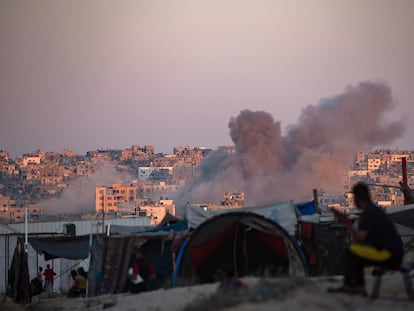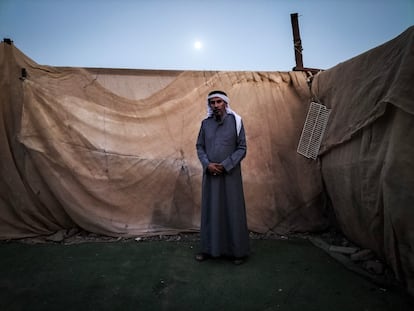Cultural keys to understanding the war in Gaza
A latent tension that has been simmering for decades has exploded and the escalation of violence has turned the region into a hotbed of geopolitical interest — but also, a much-needed source of learning
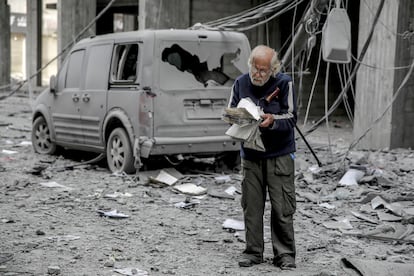
Joe Sacco’s Palestine, the most famous graphic novel about conflict in the Middle East, was destined to be one of those books that you see in literary fairs, waiting patiently to be seen by an adult who read it back when it was published in 1990s and bought it for their kid. Then on October 7, 2023, Hamas surprised the world with its coordinated attack, Israel kicked its invasion of Gaza into high gear and the area was subsumed by the latest chapter in a cycle of violence that has long been documented by history books.
Although the graphic novel portrays a much different Gaza than the one we know today (Sacco recounts his experiences during the First Intifada, which took place between 1987 and 1993), its U.S. editorial Fantagraphics suddenly began to receive orders from bookstores and distributors for thousands of copies. The title sold out and, last December hit an unusual milestone: a reprinting, some 22 years after the release of its first edition.
Its case exemplifies the renewed interest in a conflict that had been bordering on obscurity in the Western world and was often perceived as intractable, incomprehensible. The Israeli-Palestinian conflict was seen as too complicated, a relic from the 20th century. Other wars had ignited in its wake (Iraq, Syria, Afghanistan, Ukraine), there was a pandemic and a long period had passed without a brutal outbreak of violence on the scale of October 7. All this helped create the perception that the status quo between Israel and Palestine was not so unsustainable, after all. But now, words like Gaza, Hamas, Zionism, 1967 lines, settlers and the phrase “from the river to the sea” have shifted from niche conversation to morning talk shows, and publishers are rushing to update old editions and release new books on the subject. We’ve assembled a basic glossary of terms related to the conflict so that you, hopefully, don’t get lost.
Gaza Strip. Today it is synonymous with death and ruin, but historically it was a vibrant Mediterranean commercial port that was namechecked in the Old Testament. It consists of a diminutive slice of land (41 kilometers from north to south and 13 west to east, at its widest point) whose 2.3 million inhabitants are largely descendants of people who had leave their homes behind in the lands now known as Israel.
Israel occupied the area during the Six-Day War of 1967 and built 21 Jewish settlements in the Strip. This led to decades of protests and attacks. “I would like Gaza to sink into the sea, but that won’t happen, and a solution must be found,” said Israel’s prime minister Yitzhak Rabin in 1992.
In 2005, Ariel Sharon’s government made a unilateral decision that today right-wing nationals (who are backed by 22% of Israelis) are fighting to reverse: the withdrawal of all soldiers and settlers from Gaza. A year later, Hamas won elections (the last that have been held in Palestine) and wound up taking control of the Strip by force. Since 2007, two Palestinian governments have jockeyed for legitimacy. The second, The Palestinian Authority, which is recognized by the international community, is headed up by Mahmoud Abbas in the West Bank.
1967 lines. One of the phrases that often appears in governmental press statements. Why? Because, though they do not constitute an official border, for all the countries of the world save Israel, they delineate the Jewish state’s recognized territory and that which should form part of a Palestinian state, yet which Israel continues to occupy: Gaza and the West Bank, including East Jerusalem.
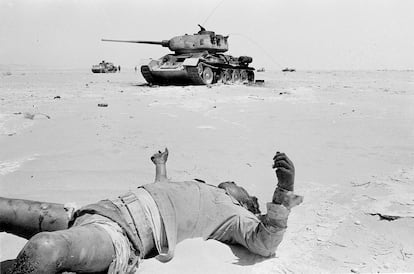
These borders are also known as the Green Line, which was established in the 1949 armistice agreements that ended the first Arab-Israeli war. But the delineations are associated with 1967 because that is the year they fell, during the Six-Day War. In 1967: Israel, the War, and the Year that Transformed the Middle East, historian Tom Segev writes of the euphoria that met this victory, in which Israel tripled the territories it controlled, absorbing the Sinai (which it returned to Egypt in a peace treaty), the Syrian Golan Heights, Gaza and the West Bank. The result, a half-century later, can be found in one of the best documentaries on the subject, Juliano Mer Khamis and Danniel Danniel’s Arna’s Children, which is set in the West Bank town of Jenin.
Official Israeli maps are prohibited from showing the Green Line, as per a governmental decision handed down in 1967. In 2022, the Tel Aviv-Yafo municipality sent schools a kit with maps that included the 1949 ceasefire line. The Education Ministry prohibited use of the map, even as a poster. It had been produced by the so-called “change government,” which does not include Benjamin Netanyahu or his rightwing associates, and is considered the country’s most liberal movement.
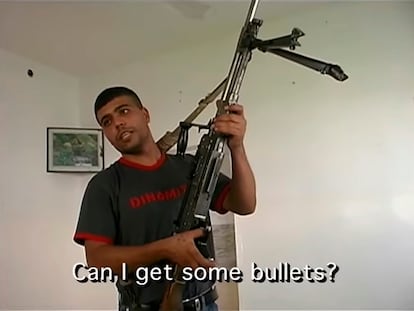
Hamas. An acronym of the group’s official name, which translates to Islamic Resistance Movement. The abbreviated version also means zeal, strength or bravery. It was founded in the 1980s, during an era of Islamist momentum in the Arab-Muslim world, as an alternative to the program of Palestinian Liberation Organization leader Yasser Arafat. It grew in popularity, not only due to its network of welfare support and its fame for honesty and faith, as compared with the PLO, which would later be known as Fatah. Also, because many Palestinians see its armed resistance as an act of dignity and justice against a much larger enemy — even when that entails the bombing of buses and restaurants full of civilians in Israeli territory, as were carried out by Hamas prior to its 2006 election victory.
In theory, Hamas denies Israel’s right to exist, but for years, it has been open to accepting a Palestinian state limited to Gaza, the West Bank and East Jerusalem. It rules Gaza with an iron fist, frequently applies the death sentence and persecutes homosexuality, but has not imposed the veil and has allowed for the existence of other political factions. The United States and European Union consider it a terrorist organization. Other nations have classified it as a liberation group with an armed component.
It is both political party and militia, half pragmatic and half radical. The latter faction has slowly overtaken the former, as evidenced by the election of Yahya Sinwar as leader in the wake of the assassination of Ismail Haniyeh in Tehran, which is thought to have been carried out by Israel. After the October 7 attack, Spanish historian Carmen López Alonso updated her essay on Hamas, retitling it De la marcha hacia poder al vuelo de Ícaro (From the march to power to the flight of Icarus).
Eretz Yisrael. Land of Israel. A territorial concept of Biblical origin that transcends the borders of the current state and is unclear on which lands it includes. It would certainly cover the whole of today’s Israel and Palestine, but also parts of Jordan, Lebanon, Syria and Iraq. It was mentioned by Israel’s founding father, David Ben Gurion, upon declaring independence, but today, it is used in a more political sense, largely by religious nationalists. Finance Minister Bezalel Smotrich caused controversy last year when he spoke at a lectern hung with a map of Eretz Yisrael.
Zionism. A word that is frequently used erroneously. Strictly speaking, it is the nationalist Jewish movement founded in the 19th century by Hungarian journalist and writer Theodor Herzl, who posited that the solution to “the Jewish problem” (as it was referred to in his time) consisted of the creation of a Jewish state. He didn’t specify where (his best-known essay, in fact, had Argentina at the top of its list) and various options were considered, but Palestine, then under Ottoman rule, eventually prevailed due to Jews’ historical and spiritual connections to the land.
Initially, the idea generated little enthusiasm, but it wound up motivating various waves of migration — many of them due to the need to flee pogroms and the rise of Nazism over any nationalist fervor — which constituted the real beginning (rather than any Biblical roots) of the Middle East conflict. Palestinians began to sense potential consequences, tensions arose, militias were established, the situation worsened, the UN looked to divide the territory and by 1947, the situation was basically one of civil war, as documented by Spanish writer Julia Navarro in her tale of two families — one Jewish and one Arabic — in her bestseller Shoot Me, I’m Already Dead.
Is it, as its critics state, a colonial project? Yes. As good Europeans, the Zionists saw native Palestinians as inferior beings (“We can be the vanguard of culture against barbarianism,” wrote Herzl) and as a roadblock to their mission, who had to be expelled if necessary. Is this different from other forms of European colonialism? Yes. Jews did not have their own state and many arrived fleeing anti-Semitism and persecution, with the movement’s zenith coinciding with the Holocaust, which exterminated some six million Jews. If you haven’t done so already, read Art Spiegelman’s graphic novel Maus, which is published by Pantheon. Was it a religious movement guided by the idea of the Promised Land? No. The vast majority of its leaders were secular, although they fell back on religious and symbolic elements for unification. The messianism and religious radicalism so present in today’s Israel are more accurately rooted in its post-1967 power binge, as Ari Shavit recounts in My Promised Land: The Triumph and Tragedy of Israel (Random House, 2013) using his own family’s history.
There is little consensus as to what the word means today, now that Israel has been created. The left, center and right employ the term to defend different concepts.
Palestinian/Arab/Muslim/Islamist. Palestinians are a people, an identity, independent of what their passport states. They are present from Chile, where they have their own soccer team, to the ‘48 Palestinians (a reference to the year in which the State of Israel was founded), the descendants of those who stayed and who now have Israeli citizenship. These individuals are officially distinguished as “Israeli Arabs.”
All Palestinians are Arab, a denomination whose history Tim Mackintosh-Smith explores in Arabs: A 3000-Year History of Peoples, Tribes and Empires (Yale University Press, 2019). Arabs are an ethnic group primarily united through language, with one modality common to the entire Arab world (which is used in writing, academic dissertations and newscasts) and another that is dialectal, encompassing notable differences between regions. A Moroccan person and an Iraqi, for example, might find it difficult to understand each other.
Not all Arabs are Muslims, or vice-versa. Muslim refers to a follower of Islam. And Islamic doesn’t refer to people (it is related to Islam, and is used to describe art, literature, and countries) and differs from Islamist, which refers to people and things that advocate for the application of Islamic laws to political, economic and other spheres.
Jewish/Hebrew/Israelite/Israeli. Four terms that are not always interchangeable. Jewish refers to a people. It is a shared identity that unites the followers of the world’s first monotheistic faith, which is lived today in very different ways, depending on the weight they give to creed, tradition, values. The large majority of them live in Israel and the United States. British historian Simon Schama wrote The Story of the Jews, published by Ecco. Hebrew is used to refer to the ancient people of Israel, literature and language, in Biblical times as well as the modern tongue spoken today, which was created in the 19th century by a Russian man, Eliezer Ben-Yehuda, who took it so seriously he would not allow his son to speak any other language. Israelite also signifies the Semite tribes of the Old Testament, although some modern-day Jewish communities use the word in their names. Israel is what God named Jacob after he wrestled with an angel and it is the name of both the ancient land and current state, whose inhabitants (the Israelis) are or are not (some 20% of the population are not) Jewish. Their distinct realities appear on the big screen in the films Fill the Void, The Band’s Visit, Ajami, Sallah Shabati, and Zero Motivation. If you only have time to watch four Israeli movies, choose Avanti Popolo, Gett, Waltz with Bashir and Beyond the Walls.
Occupation. A term that means something different depending on who is using it. In Arabic, the most irredentist groups (Islamic Jihad, Hamas, Hezbollah) often use it as a noun (“the occupation”) instead of using the word Israel, to which they deny a place on the map. In general, and in UN documents, it refers to the regime that Israel maintains in the territories it controls, in violation of international law and in distinct forms.
Gaza, for example, did not technically cease being occupied in 2005, when Israel withdrew its settlers and soldiers. Israel maintained control over Gaza’s air, sea and electromagnetic spaces, with occasional bombings and various offensives that lasted up to a month. In the Syrian Golan Heights, which were annexed in the 1980s, calm largely prevails. Outbreaks of violence between the Druze people of those lands and Jewish settlers have been infrequent.
The West Bank is similar to apartheid South Africa, with Palestinians under military rule (they can be incarcerated for years without them or their lawyers knowing what they are accused of) and settlers subject to Israeli law. Not to mention its segregated roadways, hundreds of checkpoints, daily raids, and the demolition of houses. The network is portrayed in Neve Gordon’s academic text Israel’s Occupation (University of California Press, 2008) and through the human lens of Nathan Trall’s A Day in the Life of Abed Salama: A Palestine Story, a recent Pulitizer Prize winner published by Metropolitan Books. You can also learn about the reality of the West Bank in documentaries like The Gatekeepers, The Law in These Parts and 5 Broken Cameras.
Separation barrier. A seldom-heard term that nonetheless defines the lives of hundreds of thousands of Palestinians, who have been effectively separated from Jerusalem. Daily lines and humiliations, separated families, lost harvests, impact on economic networks — living on one or another side of the wall characterizes daily existence for many Palestinians, as seen in the 2000 movie 200 Meters by Ameen Nayfeh.
Ariel Sharon’s government began to build the wall in 2002 after a wave of suicide bombings during the Second Intifada. Although Israel has tried to liken it to other barriers throughout the world, theirs is not a wall that has been erected on a recognized border. It was built in a zig-zag line, nearly all of it within the West Bank, to enclose the largest settlements. Conscious of the fact that its construction was not only a matter of security, right-wing settlers (who have unprecedented power today under Netanyahu) opposed its erection. They did not like the kind of future border it established because it meant giving up the rest of the West Bank.
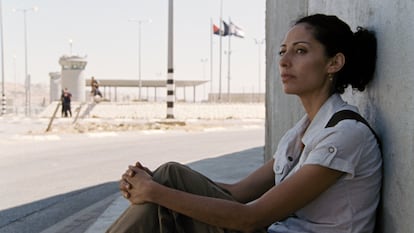
Nakba. The great catastrophe (the meaning of the term in Arabic) which has shaped Palestinian identity and links past and present, as lived by the lead character in Annemarie Jacir’s movie Salt of this Sea (2008).
It refers to the flight or expulsion, primarily by Jewish militias and then by the Israeli army, of two-thirds (some 750,000) Palestinians who lived in lands that are known today as Israel, between 1947 and 1949. Their lives are remembered by the Lebanese writer Elias Khoury in his best-known work Bab Al Shams (in English, Gate of the Sun, published by Archipelago Books). Also, by Ghassan Kanafani, who underwent the Nakba as a young boy, in his Men in the Sun and Other Palestinian Stories and Returning to Haifa.
Today, after various generations, the number of displaced Palestinians has risen to six million and they are largely based in Jordan, Syria, Lebanon, Gaza, and the West Bank. Israel says they are paying the price for rejecting the UN’s partition plan in 1947 and for going to war the following year. There is much academic debate around to what extent the Zionist leadership planned for ethnic cleansing. Israel has not allowed people to return to their homes, but at any rate today, 400 towns lie in ruins, or have had kibbutzim and national parks built on top of them.
Blockade. After the capture of Israeli soldier Guilad Shalit in 2006, and significantly, the arrival to power of Hamas in Gaza, Israel began a blockade which, during its strictest moments, based the decision of what food could enter the area on the number of calories humans need to survive. This siege — which for years was overseen by Egypt — gave rise to a generation who grew up with no other horizon save for the walls surrounding Gaza, which is today one of the most densely populated places on Earth.
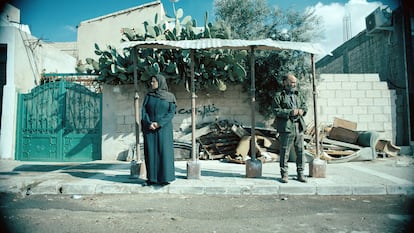
Before the war, poverty and the donkeys in the streets contrasted sharply with expensive homes and cars, thanks in part to contraband that arrived through tunnels from Egypt. This was a different Gaza, site of the Nasser brothers’ beautiful feature film Gaza mon amour (2020). Today, the area is devastated — 40,000 deaths have been confirmed since October 7 and thousands more are buried under ruins — half of its buildings destroyed and a large part of its populace living in tents, thanks to endless forced displacements.
Settlers. The lords of the land, as coined in the title of a famous essay by Idith Zertal and Akiva Eldar. Their stereotypical image is that of an armed man with an automatic rifle, screaming on a West Bank hill that he doesn’t need any property deed beyond the Bible, in which God set aside land for the Jewish people. Such individuals do indeed exist, and are obtaining more and more support, weapons and pull in the government.
But the vast majority of settlers would never see themselves in this light. They live in large residential blocks east of the Green Line, in places like Gilo, Ramot, Ma’ale Adumim and Betar Illit, regular people who don’t even think about what side of the Green Line their home is on. They just know that living where they live is cheaper, more comfortable and has more space for new construction. There are 500,000 of them in the West Bank and 250,000 in East Jerusalem. Their communities would have been impossible without the support of successive Israeli governments led by the Likud Party as well as conservative factions, through laws, the confiscation of land, budget distribution and protection and impunity for those who led attacks. Last May, the International Court of Justice in the Hague issued a reminder that such settlements are illegal and should be withdrawn.
From the river to the sea. A controversial Palestinian slogan — as Spanish deputy prime minister Yolanda Díaz can attest — that is subject to different interpretations and has seen a surge in popularity, primarily in its English translation as used during U.S. campus demonstrations.
The river to which it refers is the Jordan, and the sea, the Mediterranean. Between them currently lie the state of Israel as well as Palestinian territories. In the former, the phrase is seen as a clear call for its destruction and is interpreted as including the extermination of its citizenry. It is most associated with Islamic Jihad and Hamas, who define it in the group’s constitution as, “the full and complete liberation of Palestine, from the river to the sea.” Also, with a famous saying of Ahmed Shukairy, Arafat’s predecessor and head of the PLO, who called for the “sweeping of the Jews into the sea.”
The phrase was coined shortly after the creation of Israel in 1948. At the time, the Palestinian leadership still aspired to “reclaim all of Palestine,” but reality and the lopsided might of the two sides prevailed and the PLO gradually revised it to be a call to establish a single democracy and secular state in all of historic Palestine, with equal rights for Jews and Arabs.
In the 1980s, Arafat recognized Israel (the reverse has never taken place), but the slogan stayed in use. Not only as a call for Israel to disappear, but also as a generic show of support with Palestine, in favor of justice for the entire area or in defense of a one-state solution.
One of the paradoxes of Israeli indignation with the slogan is that it has itself advocated for certain principles linked to the phrase. Netanyahu’s party, Likud, has for decades advocated for Greater Israel (which would extend from Jordan to the Mediterranean) and the government’s current alliance with ultranationalists and ultraorthodox factions enshrines “the exclusive and undisputed right of the Jewish people to all parts of the Land of Israel.”
To read
'Palestine'
Joe Sacco
Fantagraphics, 2001
296 pages, $25
'1967: Israel, the War, and the Year that Transformed the Middle East'
Tom Segev
Metropolitan Books, 2006
710 pages, $32
'Hamás. De la marcha hacia poder al vuelo de Ícaro'
Carmen López Alonso
Catarata, 2024 (in Spanish)
192 pages, $19.53
'Shoot Me, I’m Already Dead'
Julia Navarro
Plaza & Janés
Kindle version, $11
'The Complete Maus: A Survivor’s Tale'
Art Spiegelman
Pantheon
296 pages, $35
'My Promised Land: The Triumph and Tragedy of Israel'
Ari Shavit
Random House, 2013
464 pages, $28
'Arabs: A 3000-Year History of Peoples, Tribes and Empires'
Tim Mackintosh-Smith
Yale University Press, 2019
656 pages, $64
'Israel’s Occupation'
Neve Gordon
University of California Press, 2008
344 pages, $35
'A Day in the Life of Abed Salama: Anatomy of a Jerusalem Tragedy'
Nathan Thrall
Metropolitan Books, 2023
272 pages, $20
'Gate of the Sun'
Elias Khoury
Archipelago Books, 2006
544 pages, $26
To watch
'Arna’s Children' (2004)
Juliano Mer Khamis and Danniel Danniel
Israel. 84 minutes
'The Gatekeepers' (2012)
Dror Moreh
Israel. 95 minutes
'The Law in These Parts' (2011)
Ra’anan Alexandrowicz
Palestine. 98 minutes
'5 Broken Cameras' (2011)
Emad Burnat and Guy Davidi
Palestine. 90 minutes
'200 Meters' (2020)
Ameen Nayfeh
Jordan. 96 minutes
'Salt of this Sea'
Annemarie Jacir
Palestine. 109 minutes
'Gaza mon amour' (2020)
Mohammed Abou Nasser and Ahmad Abou Nasser
Palestine. 84 minutes
'Avanti Popolo' (1986)
Rafi Bukai
Israel. 84 minutes
'Gett: The Trial of Viviane Amsalem' (2014)
Ronit Elkabetz and Shlomi Elkabetz
Israel. 115 minutes
'Waltz With Bashir' (2008)
Ari Folman
Israel. 87 minutes
'Beyond the Walls' (1984)
Uri Barbash
Israel. 103 minutes
Sign up for our weekly newsletter to get more English-language news coverage from EL PAÍS USA Edition
Tu suscripción se está usando en otro dispositivo
¿Quieres añadir otro usuario a tu suscripción?
Si continúas leyendo en este dispositivo, no se podrá leer en el otro.
FlechaTu suscripción se está usando en otro dispositivo y solo puedes acceder a EL PAÍS desde un dispositivo a la vez.
Si quieres compartir tu cuenta, cambia tu suscripción a la modalidad Premium, así podrás añadir otro usuario. Cada uno accederá con su propia cuenta de email, lo que os permitirá personalizar vuestra experiencia en EL PAÍS.
¿Tienes una suscripción de empresa? Accede aquí para contratar más cuentas.
En el caso de no saber quién está usando tu cuenta, te recomendamos cambiar tu contraseña aquí.
Si decides continuar compartiendo tu cuenta, este mensaje se mostrará en tu dispositivo y en el de la otra persona que está usando tu cuenta de forma indefinida, afectando a tu experiencia de lectura. Puedes consultar aquí los términos y condiciones de la suscripción digital.
More information
Archived In
Últimas noticias
Venezuela hardens its ‘revolutionary state’ project amid pressure from Trump
Sydney Sweeney, the actress praised by Trump: ‘Women are up against what society wants them to be’
The Bolsonaro surname: An advantage or liability in Brazil’s 2026 presidential elections?
Raúl Rocha, from jet-setting with Miss Universe to arms trafficking and fuel theft
Most viewed
- Reinhard Genzel, Nobel laureate in physics: ‘One-minute videos will never give you the truth’
- Pablo Escobar’s hippos: A serious environmental problem, 40 years on
- Charles Dubouloz, mountaineering star, retires at 36 with a farewell tour inspired by Walter Bonatti
- Why we lost the habit of sleeping in two segments and how that changed our sense of time
- The fall of a prolific science journal exposes the billion-dollar profits of scientific publishing

